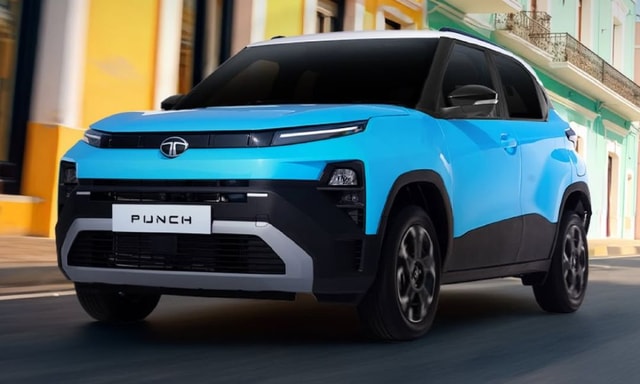Car Starter Repair At Your Home
car&bike Team
1 min read
May 28, 2022, 12:43 AM

As soon as you press the ignition key or press the start button in the case of vehicles that have a start button, you complete the starter circuit, and the starter starts running. Almost all starters contain a small pinion gear, and it engages a bigger ring gear that is on the flywheel when the starter is started. The engine flywheel is turned by the pinion gear at around 200 RPM. The engine starts because the flywheel is connected to the crankshaft and all the components in the engine turn in sync.

Do You Need to Replace the Starter?
Most starters are durable, but there is a possibility that they might fail in any of the ways mentioned below:

- Turning slowly: Mechanical and internal electrical faults can provide extra current to the starter, sometimes exceeding the battery capacity. In such a case, the engine might not start quickly.
- Unusual noises: There can be any unusual noise, such as grinding when you start your engine. It would be best to get it checked as it could mean an internal failure in the starter or could even be due to the flywheel ring gear or pinion gear damage or failure.
- Turning the key doesn't start the car: In this case, the starter motor does not start or function when you turn the key in your car's ignition. It is a sign that there is a malfunction in the starter motor.

Car Starter Repair At Home
- If you have found that the starter is faulty, then you should first disconnect the battery before you start fixing it.
- As soon as you disconnect the battery, disconnect the starter's wiring next.
- The transmission case, or engine block, has the starter bolted to it. In most cases, there are a couple of bolts. The technique to access a faulty starter can require lowering or removing other components in the car.
- Then remove the starter and install a new one.
- Tighten the mounting bolts to the specifications of the OEM factory torque.
- The next step is to clean the electrical connections and reattach them to the starter.
- Test the starter now to see and confirm if it is working properly again.
Tips for Replacing a Car Starter at Home
- Perform essential diagnostic tests before you replace your car's starter to ensure there is a fault with it. There might be a faulty neutral switch, a faulty electrical component, or a weak battery.
- The electrical connections should be inspected and tightened as the battery provides a large amount of current to the starter. You should also check the cables, look for corrosion, and replace them if necessary.
Latest News
 Jaiveer Mehra | Jan 13, 2026Tata Punch Facelift Launched At Rs 5.59 Lakh; Gets Turbo-Petrol Engine OptionUpdated micro SUV gets revised styling, new features and a new turbo-petrol powertrain option.1 min read
Jaiveer Mehra | Jan 13, 2026Tata Punch Facelift Launched At Rs 5.59 Lakh; Gets Turbo-Petrol Engine OptionUpdated micro SUV gets revised styling, new features and a new turbo-petrol powertrain option.1 min read car&bike Team | Jan 12, 2026Updated Royal Enfield Goan Classic 350 Launched: Gets Slip And Assist ClutchThe updated Goan Classic also gets a faster Type-C charging port.1 min read
car&bike Team | Jan 12, 2026Updated Royal Enfield Goan Classic 350 Launched: Gets Slip And Assist ClutchThe updated Goan Classic also gets a faster Type-C charging port.1 min read Jaiveer Mehra | Jan 12, 2026Tata Punch Facelift Launch Tomorrow: What To ExpectUpdated internal combustion Punch gets a design in line with its larger siblings as well as a new engine option.3 mins read
Jaiveer Mehra | Jan 12, 2026Tata Punch Facelift Launch Tomorrow: What To ExpectUpdated internal combustion Punch gets a design in line with its larger siblings as well as a new engine option.3 mins read Jafar Rizvi | Jan 9, 2026KTM RC 160 vs Yamaha R15: Specifications, Features, Prices ComparedKTM’s new RC 160 goes head-to-head with the Yamaha R15 in the entry-level sportbike category. Here is how the two fare on paper.1 min read
Jafar Rizvi | Jan 9, 2026KTM RC 160 vs Yamaha R15: Specifications, Features, Prices ComparedKTM’s new RC 160 goes head-to-head with the Yamaha R15 in the entry-level sportbike category. Here is how the two fare on paper.1 min read Amaan Ahmed | Jan 9, 2026Suzuki E-Access Launched At Rs 1.88 Lakh; LFP Battery Promises 95 KM RangeOriginally confirmed for a June 2025 launch, Suzuki's first electric two-wheeler for India has finally arrived almost a year after making its global debut at Auto Expo 2025.3 mins read
Amaan Ahmed | Jan 9, 2026Suzuki E-Access Launched At Rs 1.88 Lakh; LFP Battery Promises 95 KM RangeOriginally confirmed for a June 2025 launch, Suzuki's first electric two-wheeler for India has finally arrived almost a year after making its global debut at Auto Expo 2025.3 mins read car&bike Team | Jan 9, 2026Kawasaki Ninja, Versys Models Offered With Discounts Of Up To Rs 2.50 LakhThe Ninja ZX-10R is offered with maximum benefits, followed by the Ninja 1100SX and Versys 1100.1 min read
car&bike Team | Jan 9, 2026Kawasaki Ninja, Versys Models Offered With Discounts Of Up To Rs 2.50 LakhThe Ninja ZX-10R is offered with maximum benefits, followed by the Ninja 1100SX and Versys 1100.1 min read
 Bilal Firfiray | Jan 9, 2026Toyota Urban Cruiser Hyryder: 10,000 km Long-Term ReviewAfter spending over three months and 10,000 km with the Toyota Urban Cruiser Hyryder Hybrid, we were impressed by its real-world mileage, seamless hybrid, practical comfort, and Toyota reliability. Is it the best C-SUV then?5 mins read
Bilal Firfiray | Jan 9, 2026Toyota Urban Cruiser Hyryder: 10,000 km Long-Term ReviewAfter spending over three months and 10,000 km with the Toyota Urban Cruiser Hyryder Hybrid, we were impressed by its real-world mileage, seamless hybrid, practical comfort, and Toyota reliability. Is it the best C-SUV then?5 mins read Seshan Vijayraghvan | Jan 8, 20262026 Mahindra XUV 7XO Review: Big On Tech, Bigger On ComfortThe new Mahindra XUV 7XO is flashier, feature packed, and comes with more advanced tech. But are the changes just incremental or actually substantial?1 min read
Seshan Vijayraghvan | Jan 8, 20262026 Mahindra XUV 7XO Review: Big On Tech, Bigger On ComfortThe new Mahindra XUV 7XO is flashier, feature packed, and comes with more advanced tech. But are the changes just incremental or actually substantial?1 min read Preetam Bora | Jan 10, 2026Simple One Gen 2 First Ride Review: 265 km Claimed Range!The Gen 2 model of Simple Energy’s first electric scooter gets a fair few updates, including new features, tech, more range and lighter weight. We spent a couple of hours with the Simple One Gen 2 to find out if it manages to impress.6 mins read
Preetam Bora | Jan 10, 2026Simple One Gen 2 First Ride Review: 265 km Claimed Range!The Gen 2 model of Simple Energy’s first electric scooter gets a fair few updates, including new features, tech, more range and lighter weight. We spent a couple of hours with the Simple One Gen 2 to find out if it manages to impress.6 mins read Amaan Ahmed | Jan 3, 2026VLF Mobster 135 300 KM Review: Fun But FlawedA 125 cc scooter with Italian design and Chinese genes is a rare combination, and while some may be tempted to dismiss it because of its origins, the VLF Mobster shows 125s can also be exciting – but not without compromises.11 mins read
Amaan Ahmed | Jan 3, 2026VLF Mobster 135 300 KM Review: Fun But FlawedA 125 cc scooter with Italian design and Chinese genes is a rare combination, and while some may be tempted to dismiss it because of its origins, the VLF Mobster shows 125s can also be exciting – but not without compromises.11 mins read Preetam Bora | Dec 30, 2025TVS Orbiter Review: Real-World Performance and Range TestedThe TVS Orbiter is a promising electric scooter promising decent range, practicality and pricing. But is there any reason to avoid it? We spent a few days getting to know it better.9 mins read
Preetam Bora | Dec 30, 2025TVS Orbiter Review: Real-World Performance and Range TestedThe TVS Orbiter is a promising electric scooter promising decent range, practicality and pricing. But is there any reason to avoid it? We spent a few days getting to know it better.9 mins read





















































































































